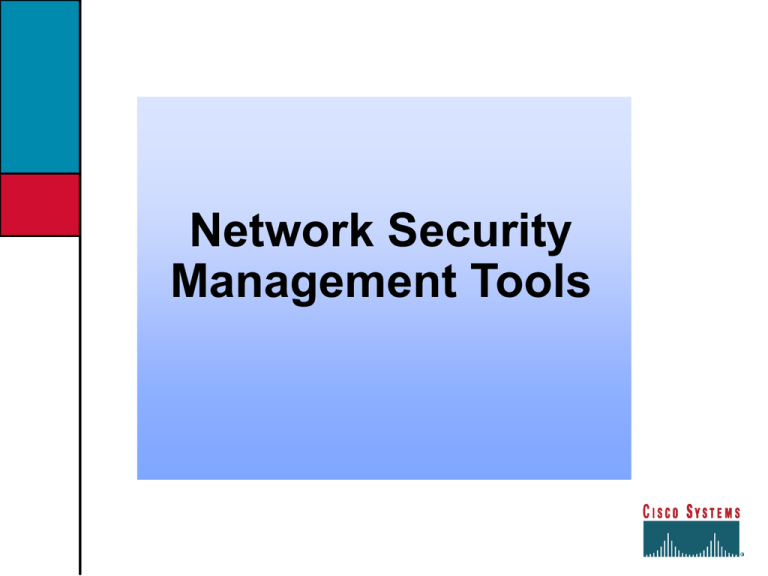5 Network Security Tools

In the realm of network security, having the right tools is paramount to protect against ever-evolving threats. Whether you’re a seasoned security professional or just starting to delve into the world of cybersecurity, understanding the capabilities and applications of various network security tools is essential. Here, we’ll explore five network security tools that are considered staples in the industry, each serving a unique purpose in the quest to secure network infrastructures.
1. Nmap (Network Mapper)
Nmap is one of the most widely used network security tools for network discovery and security auditing. Developed by Gordon Lyon (also known as Fyodor), Nmap can perform a variety of functions, including network exploration, host discovery, and service version detection. Its versatility allows users to identify open ports and services on a network, which can be critical for detecting unauthorized access points or services that could pose a security risk. Nmap supports a wide range of scanning techniques, from simple TCP connect scans to more complex UDP and TCP SYN (half-open) scans, making it an indispensable tool for both beginners and experienced professionals.
2. Wireshark
Wireshark is a network protocol analyzer that allows users to capture and display the data traveling back and forth on a network in real-time. This powerful tool is essential for diagnosing network problems, debugging network protocols, and educating users about network protocols. By analyzing the captured data, security professionals can detect anomalies in network traffic, identify signs of intrusion, and troubleshoot network issues with precision. Wireshark supports hundreds of protocols and runs on multiple platforms, making it a fundamental asset in any network security toolkit.
3. Snort
Snort is an open-source network-based intrusion detection system (NIDS) that can also be used as an intrusion prevention system (IPS). It is capable of performing real-time traffic analysis and packet logging on IP networks. Snort is renowned for its ability to detect a wide range of attacks and probes, such as buffer overflows, stealth port scans, and CGI attacks, among others. By monitoring network traffic, Snort can provide alerts or automatically drop suspicious packets to prevent network intrusions. Its rule-based language allows users to customize detection and response to suspected threats, making Snort a versatile and powerful network security tool.
4. Metasploit
Metasploit is a penetration testing tool that enables security professionals to test their networks and systems for vulnerabilities. It provides a comprehensive platform for vulnerability exploitation and verification, offering a vast library of exploits and tools to simulate real-world attacks. By using Metasploit, users can identify weaknesses in their systems before malicious actors do, allowing for proactive measures to be taken to strengthen defenses. Metasploit supports various auxiliary tools for tasks like reconnaissance, and its modular design makes it extendable with new exploits and tools, ensuring it stays relevant and effective as threats evolve.
5. Burp Suite
Burp Suite is a suite of tools aimed at application security testing. Developed by PortSwigger, it is primarily used for web application security testing but can also be utilized for network security assessments. Burp Suite includes tools for mapping, analyzing, and attacking web applications. Its capabilities include vulnerability scanning, SQL injection, and cross-site scripting (XSS) testing, among others. One of its standout features is the ability to intercept and modify HTTP requests in real-time, allowing for detailed examination of how web applications respond to various inputs. This makes Burp Suite an indispensable tool for identifying vulnerabilities in web applications and ensuring the security of data transmitted over the network.
Implementing Security Measures with HTML Structure
Key Considerations

- Regularly update and patch all software and systems to protect against known vulnerabilities.
- Implement firewalls and intrusion detection systems to monitor and control incoming and outgoing network traffic.
- Use encryption for data in transit and at rest to prevent unauthorized access.
- Conduct regular security audits and penetration testing to identify and address vulnerabilities.
Step-by-Step Security Enhancement
- Identify Critical Assets: Determine which data and systems are most critical to your operations.
- Assess Risks: Evaluate potential threats and vulnerabilities to these assets.
- Implement Controls: Based on the risk assessment, implement appropriate security controls, such as access controls, encryption, and firewalls.
- Monitor and Respond: Continuously monitor for security incidents and have procedures in place to respond to them.
Scenario-Based Example
Consider a scenario where a company’s web application is found to be vulnerable to SQL injection attacks. Using tools like Burp Suite, security professionals can simulate such attacks to understand the potential damage. They can then use the insights gained to patch the vulnerabilities and implement additional security measures, such as input validation and parameterized queries, to prevent future attacks. This proactive approach not only protects the company’s data but also enhances customer trust by demonstrating a commitment to security.
Thought Experiment Framework
Imagine a network with no security measures in place - no firewalls, no encryption, and open access to all resources. Now, consider the implications of implementing each of the tools mentioned above one by one into this network. As you add Nmap for network discovery, Snort for intrusion detection, and Metasploit for vulnerability testing, the security posture of the network significantly improves. Each tool adds a layer of protection and inspection, gradually closing vulnerabilities and reducing the risk of successful attacks. This thought experiment highlights the cumulative effect of employing a variety of network security tools in protecting against the diverse range of threats that networks face today.
Future Implications
The landscape of network security is continuously evolving, with new threats emerging every day. As networks become more complex, with the integration of IoT devices, cloud services, and mobile devices, the challenge of securing them grows. The tools discussed here will continue to play crucial roles in network security, but the industry must also embrace new technologies and strategies, such as artificial intelligence (AI) and machine learning (ML), to stay ahead of threats. For example, AI can be used to analyze network traffic patterns to predict and prevent attacks, while ML can help in identifying and mitigating unknown threats more effectively than traditional rule-based systems.
Practical Application Guide
For those looking to apply these tools in real-world scenarios, a good starting point is to conduct a thorough network audit using Nmap, followed by the setup of Snort to monitor network traffic for intrusions. Metasploit can then be utilized to test for vulnerabilities, and Burp Suite for web application security testing. Each tool requires a different skill set and understanding, so dedicating time to learning each is crucial. Furthermore, considering the dynamic nature of network security, ongoing education and staying updated with the latest releases and techniques for these tools are essential.
Frequently Asked Questions
What is the primary function of Nmap in network security?
+Nmap's primary function is to discover hosts and services on a computer network, thus creating a map of the network. This is crucial for understanding network topology and identifying potential vulnerabilities.
How does Wireshark contribute to network security?
+Wireshark contributes to network security by allowing users to capture and analyze network traffic. This can help in diagnosing network problems, detecting anomalies that could indicate security breaches, and troubleshooting network issues.
What is the role of Metasploit in penetration testing?
+Metasploit is a penetration testing framework that provides a comprehensive set of tools for simulating attacks on networks and systems. It helps security professionals identify vulnerabilities by exploiting them in a controlled manner, thereby enabling proactive measures to secure the network.
In conclusion, network security is a multifaceted challenge that requires a comprehensive approach, combining various tools and strategies to protect against the myriad of threats lurking in today’s digital landscape. By understanding and effectively utilizing tools like Nmap, Wireshark, Snort, Metasploit, and Burp Suite, security professionals can significantly enhance the security posture of their networks, safeguarding against vulnerabilities and ensuring the integrity and confidentiality of sensitive data. As technology advances and new threats emerge, the importance of these tools and the expertise of those who wield them will only continue to grow.



